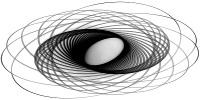Smoothing Boundary Curves
Publications
- [Details]
W. Li, R. R. Martin, F. C. Langbein. Merging and Smoothing Machining Boundaries on Cutter Location Surfaces. In: Proc. ACM Symp. Solid and Physical Modeling, pp. 165-170, 2010.
- [Details]
W. Li, R. R. Martin, F. C. Langbein. Molds for Meshes: Computing Smooth Parting Lines and Undercut Removal. IEEE Transactions on Automation Science, 6(3):423-432, 2009.
- [Details]
W. Li, R. R. Martin, F. C. Langbein. Generating Smooth Parting Lines for Mold Design for Meshes. In: Proc. ACM Symp. Solid and Physical Modeling, pp. 193-204, ACM Siggraph 2007.
Partners
W. Li
Cardiff University, UKWeishi Li
School of Computer Science and Informatics, Cardiff University, UK.Delcam Inc PLC
Birmingham, UK.Ralph R Martin
School of Computer Science and Informatics, Cardiff University, Cardiff, UK.Frank C Langbein
School of Computer Science, Cardiff University, Cardiff, UK.
Funding
- [Details]
June 2005 – June 2009: Smoothing Boundary Curves. ESPRC GR/T24579/01. PI: R. R. Martin, CoI: F. C. Langbein. Industrial partner: Delcam Int PLC. £196.722.
